
With the digital marketing world filled with display advertising, it is challenging to reach an audience effectively. Display ads are slightly annoying and disrupt the experience of the consumer. As a result, consumers have subconsciously trained themselves to be oblivious to such ads, known as banner-blindness. Display ads are even more annoying on smartphones, as these are personal devices that people use daily. When you consider most of the 3.6 billion smartphone users’ time spent on mobile apps, it becomes crucial for marketers to advertise in a non-intrusive way– a method that seamlessly fits within the app to avoid banner blindness and be less disruptive! – Enter – Mobile Native Ads.
The word native means “an original or indigenous inhabitant.” In short, these ads are similar to the original or indigenous elements of a platform. They are paid ads that seamlessly follow the natural form and function of a platform. The concept of native advertising is to make it seem like the ad is part of the media format in which they appear. They match the other elements of the media format to make the viewer feel that the ad belongs there.
Native ads will have one of the following marked on them:
Native ads are similar on desktop and mobile; they match the look and feel of the platform. The primary difference lies in the usage of mobile devices compared to desktops. Desktops are largely used in offices for professional purposes, whereas mobile devices are used for personal activities. Additionally, native ads take advantage of the form and function of the surrounding user experiences, all of which are native to mobile devices. Thus making native ads a unique way to reach users on mobile devices.
A lot of people confuse native advertising with content marketing, but they’re not quite the same. While content marketing aims to create relevant and educational content that matches the content topic and format, native advertising seeks to match the style or form, and function of a site/app. Moreover, mobile native ads can be bought programmatically, whereas content marketing requires editorial consent.
Native ads are created using various metadata elements like title, description, thumbnail image, and more. Mobile native ads work on a supply and demand basis. On the supply side are the publishers looking to leverage their audience and reach to monetize their site/app. On the demand side are advertisers looking to buy ad spaces on sites/apps to improve brand awareness, lead generation, etc. Through programmatic buying, the Supply Side Platform (SSP) puts out bid requests on behalf of the publisher. On the other hand, Demand Side Platform (DSP) bids on these requests on behalf of the advertiser. Based on metadata metrics, the SSP selects the winning bid. It configures the native ad by automatically arranging each element to follow the natural form and function of the app/site.
Social network platforms contain users’ content and sponsored content from advertisers. People do not follow pages, yet they appear on their feed with a tiny “sponsored” branding on the post come under this type of mobile native ads. They usually feature social proof, where they show a friend has liked the page/post. This is a great way to spread brand awareness, as people see a person in their circle of friends liking/commenting/following a brand. People can interact with these ads just like other content on the platform. For example, they can like, share or comment on native ads on Facebook and Instagram, retweet them on Twitter, and pin them on Pinterest. The purpose of such ads is to increase awareness and content engagement.
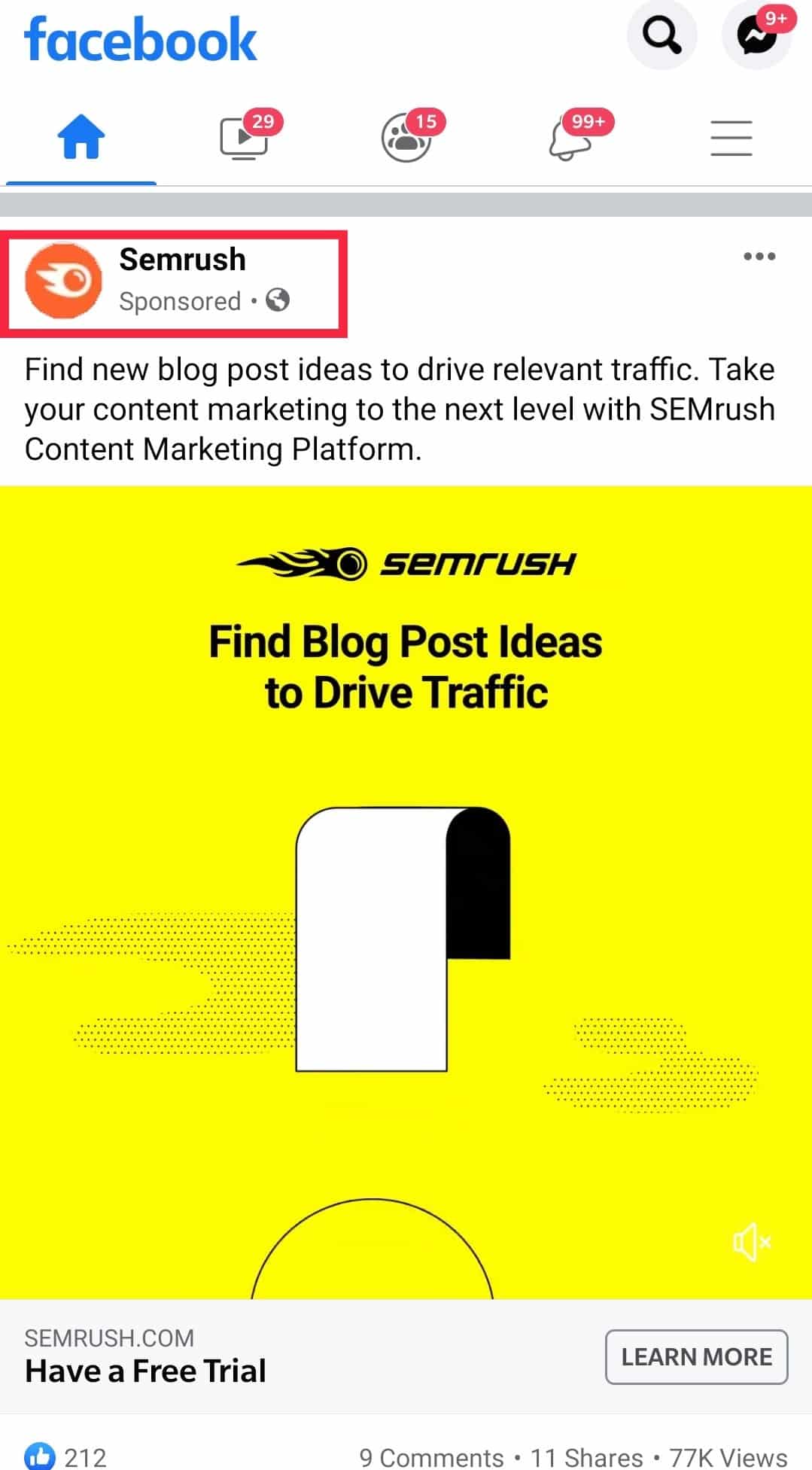
Commerce sites/apps contain product listings, and publishers integrate sponsored products within the listing. They are formatted to look similar to the products that appear organically. These native ads will contain a product image, short description, price, and user reviews. These ads function the same as organic products on the site/app. Customer interaction with such ads includes: buy, add to cart, like, or add to wish list. This is a great opportunity for a retail business to leverage the massive audience of active buyers on commerce sites/apps.
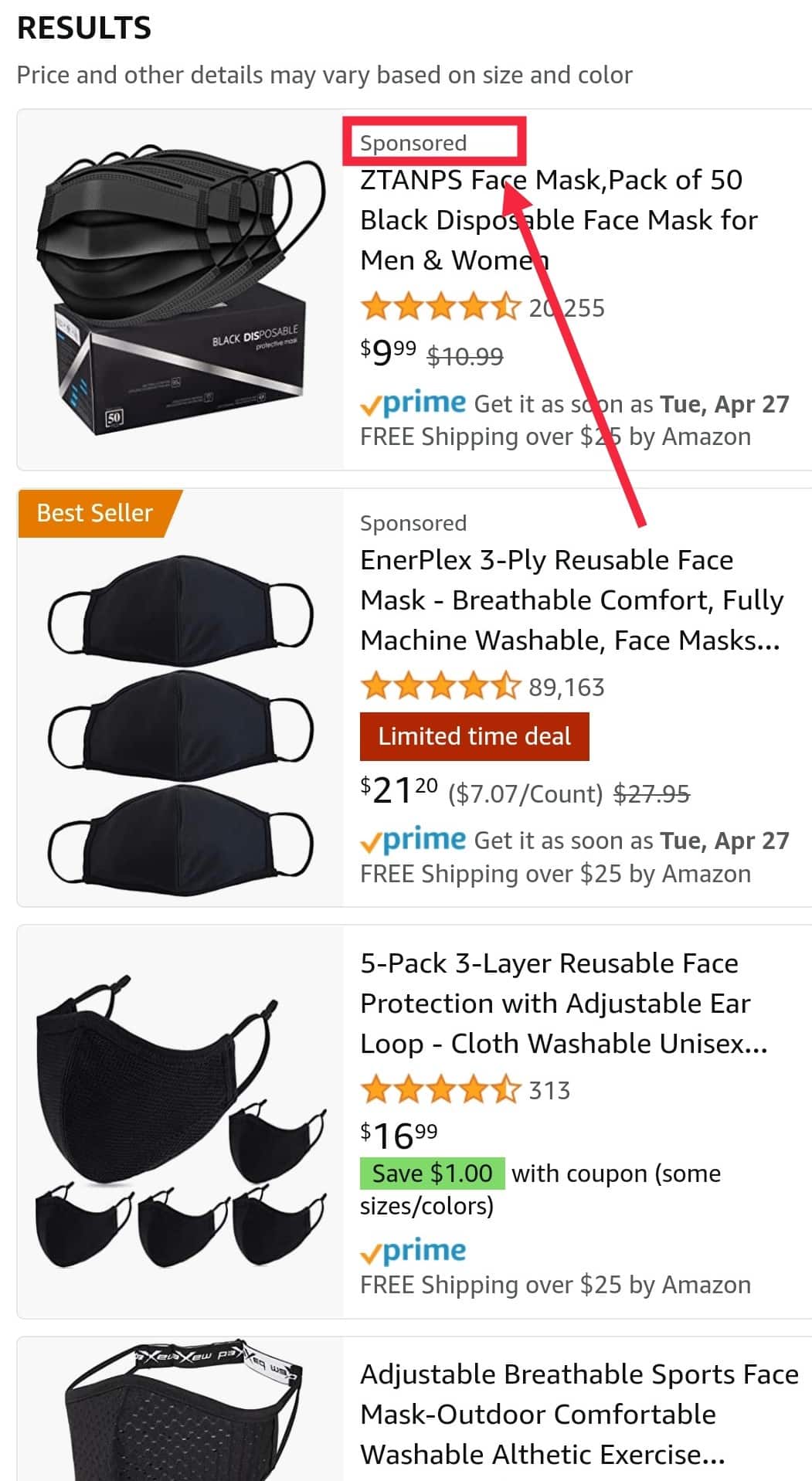
Sponsored content that appears on editorial feeds, streaming platforms, and wall feeds. These can be stories, music, games, and more, depending on the content that the site/app publishes. They match the site/app design, including fonts, graphics, etc. Function the same way as unpaid content, capable of gestures such as flipping, swiping, and viewing in feed. They help drive customer engagement through reading, listening, or watching the content.
Mobile map apps such as Google Maps facilitate ads. These ads are shown to the user when they search for a place related to the ad. They look similar to the organic search results on maps. Include information such as distance, opening and closing times, customer review, amenities, etc. User interaction is also similar to organic search results on maps, including click to call and provide navigations.
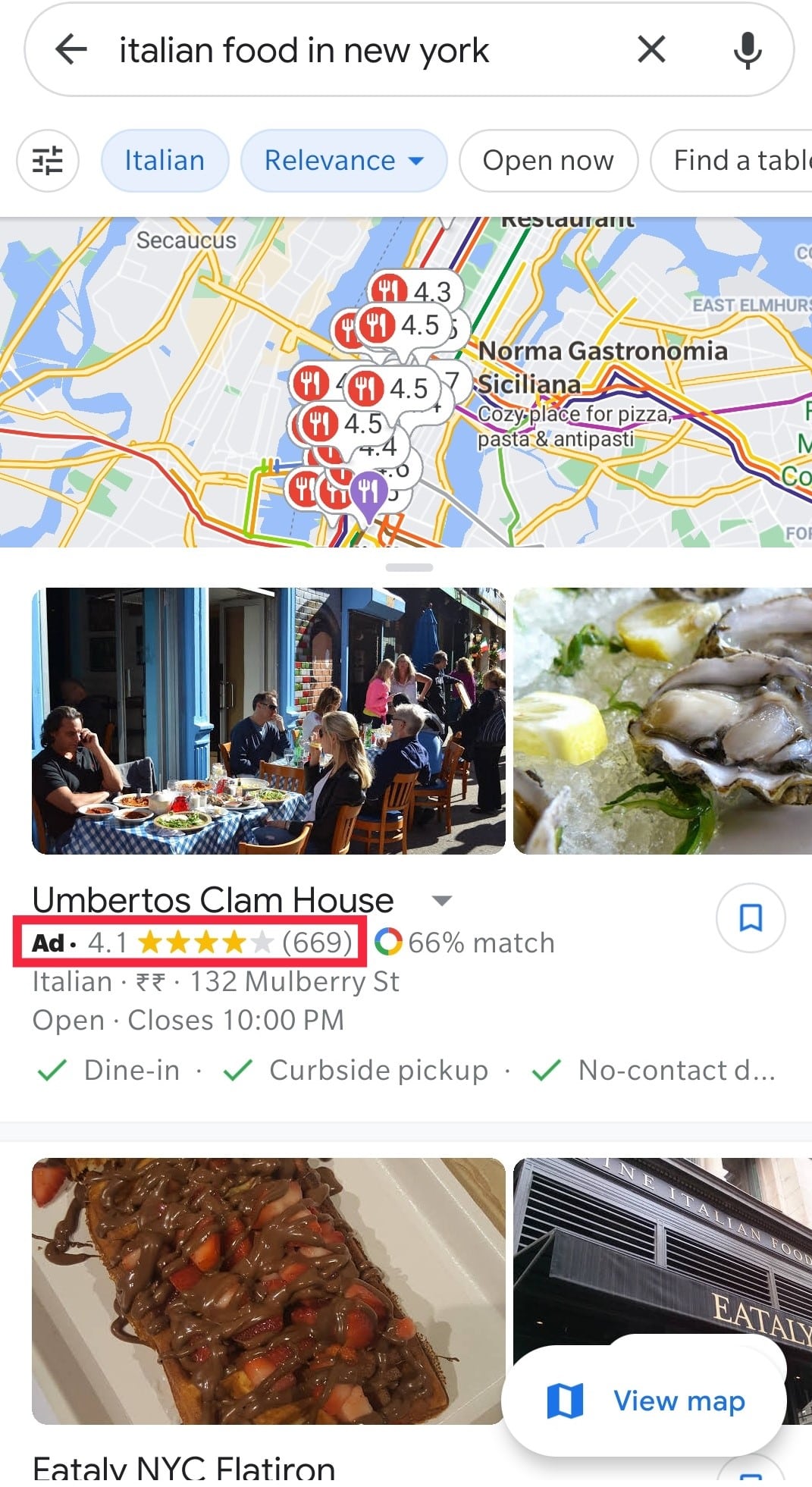
These are opt-in video ads, where players are invited to watch the ad in exchange for in-game rewards. Rewards can be an in-game currency, game clue/tip, increase in player XP, etc. These in-app video ads match the look and feel of the game. The video only pops up on the screen after the player clicks on an icon that offers rewards for watching the ad.
Search results on mobile sites or apps integrated with organic search results with “Ad” or “sponsored” marked on them. They appear on the search result page and follow the same font style as organic search results. Performs similar functions as organic search results; click, call, etc. Google and Yahoo are popular examples of search engines that run such ads.
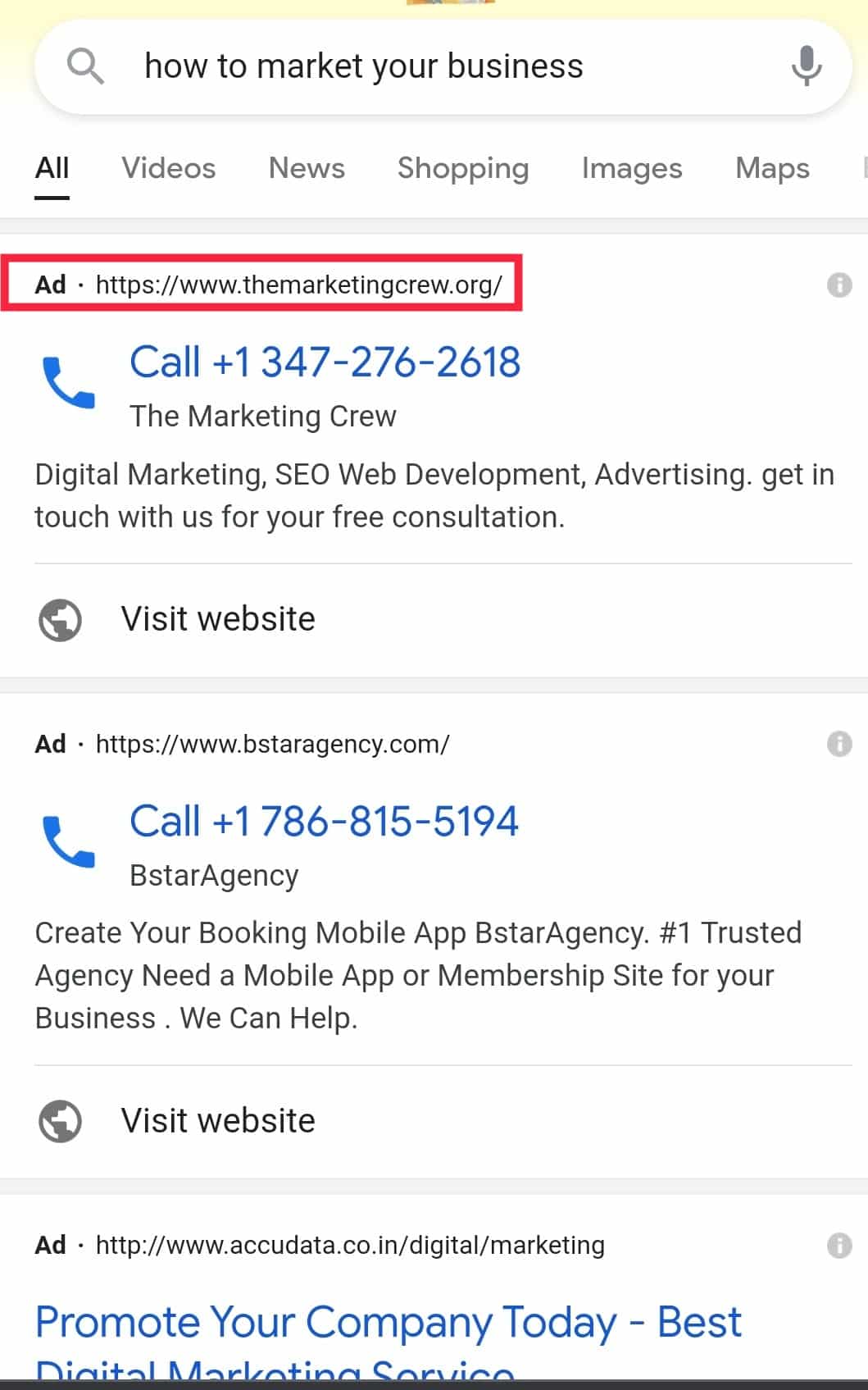
In the age of the internet, recommended widgets help customers to navigate and explore new content, usually placed at the end of the feed or the end of an article. It allows customers to surf through related content. They typically have a “Recommended for you” or “You may like” title. The image and text match the design of the feed or article. User behavior is the same as organic content; click-through function to open out the full article.
The Mobile Marketing Association (MMA) recognizes a final category of native ads. These ads are not ads; for mobile, brands create custom apps that include music, videos, games, editorials, and more. Instead of advertising on another platform, brands create their app, which itself acts as an ad. The performance of this type of native ad depends on how useful the app is to the user. A great example is the Nivea Sun Kids ad. Nivea created a mobile app and technology-laden paper bracelets for parents to keep track of their kids in busy places such as the beach. These humidity-resistant paper bracelets were inserted in magazines, which could be detached and strapped onto the kids. The bracelet could then be tracked via the app. The app and bracelet were part of Nivea’s “The Protection Ad” campaign, resulting in a 62% increase in sales in Rio de Janeiro (their target location).
CTRs for Native ads are 8.8x higher than banner ads. It should come as no surprise, as native ads dodge the problem of banner-blindness. Customers are almost tricked into thinking that the ad is part of the original content. They may click the ad without realizing that it was an ad. Even if the customer sees the “Ad” or “Sponsored” tag on the content, they may click it as native ads match the style of the site/app, providing a sense that it belongs there.
Purchase intent refers to the intention of the customer to purchase the product or service mentioned in the ad. Mobile native ads have a high purchase intent because of their non-intrusive placement within the app and the added value to the customer.
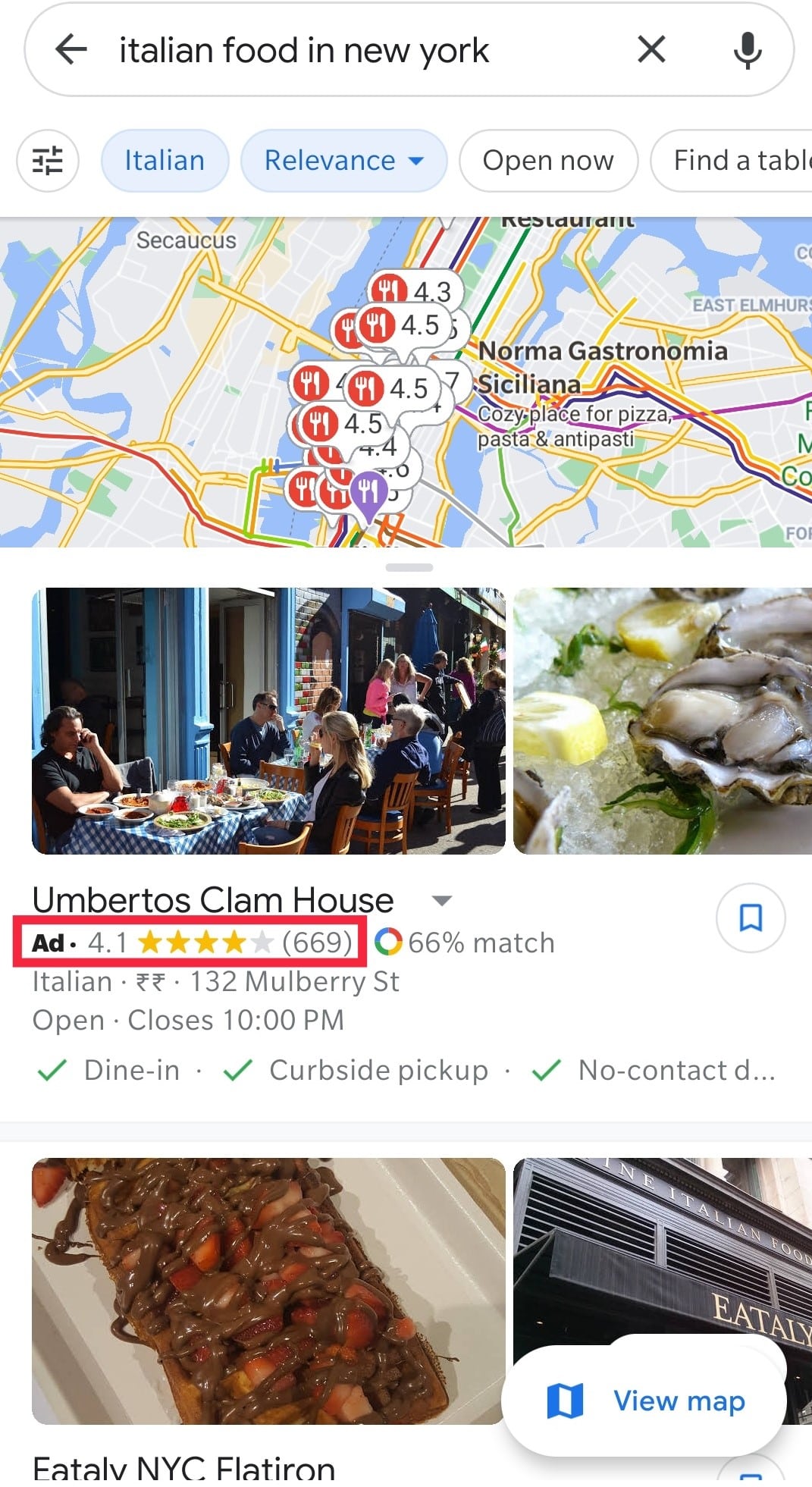
From the above image, you can see that when you search for “Italian food in New York,” the ad for “Umbertos Clam House” appears on top. People are most likely to go there as they are looking for a good place to eat Italian food, and Google maps show this result on top. Even if it is an ad, no one would mind receiving a recommendation with good reviews and matches what they are looking for.
Ad fatigue is when people get tired of seeing an ad. Because of the camouflage nature of mobile native ads, they do not provide an opportunity for ad fatigue. Contrastingly, as long as the ad matches the form and function of the app and the content is relevant and interesting, native ads engage the audience.
Most apps don’t have ad-blockers built into them; advertisers can take advantage of it to reach more users. Ad-blockers are usually only built into paid apps with prices that run up to $4. Interestingly, most of these ad-blocking apps block various mobile browser ads and aren’t designed to block advertising content displayed in the app itself. As a result, we may see many advertisers shift from mobile browser ads to in-app native ads.
Mobile native ads provide some unique advantages to advertisers that are bound to bring a significant shift in the advertising landscape. They are cheaper than video ads and receive 8x more CTRs than banner ads.
So, what are you waiting for? Design your mobile native ads with Rocketium.